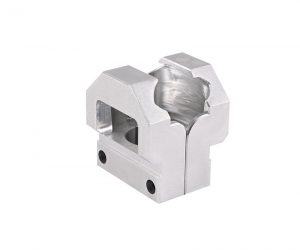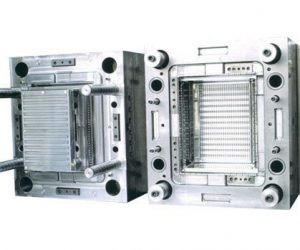let’s talk about the cool world of precision-engineered components in today’s manufacturing scene. These high-tech parts are all about being super accurate in their design and function, and they play a huge role in making products that rock! They’re not just your average run-of-the-mill bits – these components are meticulously designed to perform at their absolute best, ensuring top-notch performance, reliability, and cost-effectiveness. Trust me, once you understand how these precision parts make a difference, you’ll see why they’re such game-changers in the industry!
I. Introduction
A. Definition of Precision Engineered Components
Precision engineered components are parts or assemblies that are manufactured to extremely tight standards and tolerances, with extreme accuracy and consistency. These things are made using high technology and some amazing manufacturing techniques to ensure they perform extremely well, are reliable, and are extremely durable.
B. Importance in Modern Manufacturing
The creation of precision-engineered components transcends mere manufacturing; it's a complex interplay of design philosophy, material science, and technological prowess, pushing the boundaries of what's mechanically feasible. This exploration delves into the multifaceted nature of this process, revealing the intricate dance between human ingenuity and automated precision.
II. The Genesis of Precision: From Blueprint to Reality
A. Design: A Symphony of Constraints and Possibilities: The initial phase isn't simply drafting; it's a rigorous negotiation between desired functionality, material limitations, and manufacturing constraints. Advanced CAD software acts as the conductor, orchestrating the creation of intricate 3D models that anticipate and mitigate potential failure points, a process demanding not only technical expertise but also a deep understanding of the component's operational environment. This stage transcends mere visualization; it's the genesis of a complex system’s behavior.
B. Material Selection: A Crucible of Properties: Material selection is not a simple choice; it's a strategic decision based on a nuanced understanding of material properties under stress. The selection process considers not only strength and corrosion resistance but also fatigue limits, creep behavior, and the intricate interplay of these properties under dynamic loading conditions. The choice of material dictates not only the component's lifespan but also the very feasibility of the design.
C. Machining and Assembly: A Ballet of Automated Precision: Advanced machining techniques, such as CNC milling y turning, are far from simple subtractive processes. They represent a sophisticated interplay between toolpath optimization, cutting parameters, and real-time feedback mechanisms. The assembly process, often involving intricate tolerances and specialized joining techniques, requires a level of precision that challenges the very limits of mechanical engineering. Imperfect alignment can cascade into catastrophic failure.
D. Quality Assurance: The Bastion of Reliability: Quality control isn't a mere post-production check; it's an iterative process woven into the fabric of the entire manufacturing chain. Dimensional inspections, surface roughness analysis, and non-destructive testing methods ensure not only adherence to specifications but also the prediction and prevention of latent defects. This phase represents a commitment to unwavering quality, a cornerstone of trust in the final product.
III. Technological Advancements: The Catalysts of Innovation
A. CAD: Beyond Visualization – Predictive Modeling: Modern CAD software transcends simple 3D modeling; it incorporates sophisticated simulation tools capable of predicting component behavior under various stress conditions, enabling engineers to refine designs before physical prototyping. This predictive capability significantly reduces development time and minimizes the risk of costly design flaws.
B. CAM: The Orchestration of Automated Precision: CAM systems are not merely automated machines; they are intelligent systems capable of optimizing toolpaths, managing material flow, and adapting to real-time variations in manufacturing conditions. Additive manufacturing (3D printing), a disruptive force in the field, allows for the creation of complex geometries previously deemed impossible, challenging traditional manufacturing paradigms.
C. Additive Manufacturing: Redefining the Limits of Fabrication: 3D printing is not simply a rapid prototyping tool; it's a transformative technology enabling the creation of customized, high-precision components with intricate internal structures, pushing the boundaries of design complexity and material utilization. This technology is reshaping the landscape of precision engineering.
D. Robotics and Automation: The Symphony of Efficiency: Robotics and automation are not merely cost-saving measures; they represent a paradigm shift in manufacturing efficiency and precision. Automated systems, coupled with advanced sensor technologies, ensure consistent quality and minimize human error, leading to significant improvements in productivity and reliability.
IV. The Ripple Effect: Benefits Across Industries
A. Performance Enhancement: A Paradigm of Efficiency: Precision-engineered components are not merely functional parts; they are the enablers of superior product performance. Their consistent quality and tight tolerances directly translate into enhanced efficiency, reliability, and longevity across a wide range of applications.
B. Reliability and Durability: The Foundation of Trust: The precision and consistency inherent in these components translate into enhanced reliability and durability, reducing the risk of failure and minimizing maintenance requirements. This translates to increased product lifespan and reduced operational costs.
C. Cost Optimization and Accelerated Time-to-Market: The integration of advanced technologies leads not only to improved quality but also to significant cost reductions and accelerated time-to-market. Automated processes, reduced material waste, and streamlined workflows contribute to a more efficient and profitable manufacturing process.
D. Ubiquitous Applications: The Engine of Technological Advancement: Precision-engineered components are not confined to a single industry; they are integral to a wide range of sectors, from aerospace and automotive to medical devices and microelectronics. Their ubiquitous presence underscores their critical role in driving technological innovation and shaping the future of engineering.
V. Challenges and Future Trends
A. Skilled Labor and Training
Manufacturing precision-engineered parts is super tricky, mostly because of the need for really skilled workers. You’ve got advanced machines to run and tons of know-how needed for designing, checking quality, and fixing problems. So, companies have to keep investing in training their staff to make sure everyone’s up to snuff.
B. Adoption of Advanced Technologies
Although the benefits of high-tech technologies such as CAD, CAM and additive manufacturing are well known, it is not easy to use these new gadgets. You need to invest a lot of money first and upgrade your equipment and facilities. For manufacturers to stay competitive, they must find ways to overcome these challenges and make good use of the potential of precision engineering parts.
C. Sustainability and Environmental Impact
With everyone getting more serious about being green, companies that make really precise parts have to think about how their actions affect the environment. This means using less energy, throwing away less stuff, and choosing materials and methods that don’t hurt the planet as much. They want to cut down on carbon emissions and help create a better future for us all.
D. Continuous Innovation and Development
The world of manufacturing is always on the move, and there’s a growing need for super precise parts. to make their processes even better. It’s all about being one step ahead and bringing the coolest stuff to their customers.
Preguntas frecuentes
1. What are the key benefits of precision engineered components?
Precision engineered components represent not merely a manufacturing advancement, but a paradigm shift in product development. Their benefits extend far beyond the superficial; they represent a fundamental alteration in the relationship between design intent and realized performance. Improved product performance and reliability are not simply outcomes, but rather inherent properties stemming from the sub-micron control afforded by advanced manufacturing techniques. This translates to not only increased durability and reduced maintenance, but also to a profound shift in lifecycle cost analysis, often revealing unexpected economies of scale previously obscured by imprecise manufacturing methods. The cascading effect on diverse applications, from the life-critical systems of aerospace to the intricate mechanisms of nanotechnology, underscores their transformative influence.
2. How do advanced manufacturing technologies contribute to the production of precision engineered components?
The production of these components is inextricably linked to the relentless march of advanced manufacturing technologies. CAD/CAM systems are no longer mere design and manufacturing tools; they are integral components of a sophisticated, interconnected ecosystem. Additive manufacturing, far from a niche technology, is rapidly becoming the cornerstone of customized, high-performance component creation, allowing for geometries previously deemed impossible. Robotics, integrated with sophisticated AI-driven quality control systems, ensures consistent precision across vast production runs, mitigating human error and maximizing throughput. However, this technological sophistication introduces a new layer of complexity.
3. What challenges do manufacturers face in the production of precision engineered components?
The challenges facing manufacturers are not merely technological hurdles, but systemic issues demanding innovative solutions. The acquisition and retention of highly skilled personnel capable of operating and maintaining these complex systems is a constant struggle, requiring significant investment in training and development. The initial capital expenditure required for advanced technologies presents a significant barrier to entry for smaller manufacturers, potentially exacerbating existing economic inequalities. Furthermore, the environmental impact of these processes demands a critical reassessment of material selection, energy consumption, and waste management, necessitating a transition towards truly sustainable manufacturing practices. The relentless pressure to innovate, to anticipate and surpass market demands, adds another layer of complexity, demanding a dynamic and adaptive approach to manufacturing strategy.
4. How do precision engineered components contribute to product performance and reliability?
The contribution of precision engineered components to product performance and reliability is not merely additive; it is multiplicative. The tight tolerances and consistent quality are not simply desirable attributes; they are the very foundation upon which superior performance is built. This translates to enhanced efficiency, extended service life, and a dramatic reduction in the probability of catastrophic failure. The implications for safety-critical applications are profound, impacting everything from aviation safety to medical device reliability, where even minor deviations can have devastating consequences.
5. What are the diverse applications of precision engineered components?
The diverse applications of these components extend far beyond the commonly cited examples. While aerospace, automotive, medical, and electronics sectors remain dominant consumers, the increasing sophistication of robotics, automation, and energy systems is driving demand in previously underserved markets. The development of advanced materials, coupled with the precision engineering capabilities, is unlocking new possibilities in fields ranging from sustainable energy production to personalized medicine. The very definition of "precision engineered components" is constantly evolving, driven by the relentless pursuit of innovation and the ever-increasing demands of a technologically advanced world.
Conclusión
In conclusion, precision engineered components are not merely components; they are the enablers of a new era of manufacturing, pushing the boundaries of what is possible. Their impact extends far beyond the immediate product; they represent a fundamental shift in design philosophy, manufacturing processes, and ultimately, the future of technology itself. The challenges are significant, but the rewards—in terms of performance, reliability, and economic impact—are even greater, ensuring their continued centrality in the evolving landscape of global manufacturing.


